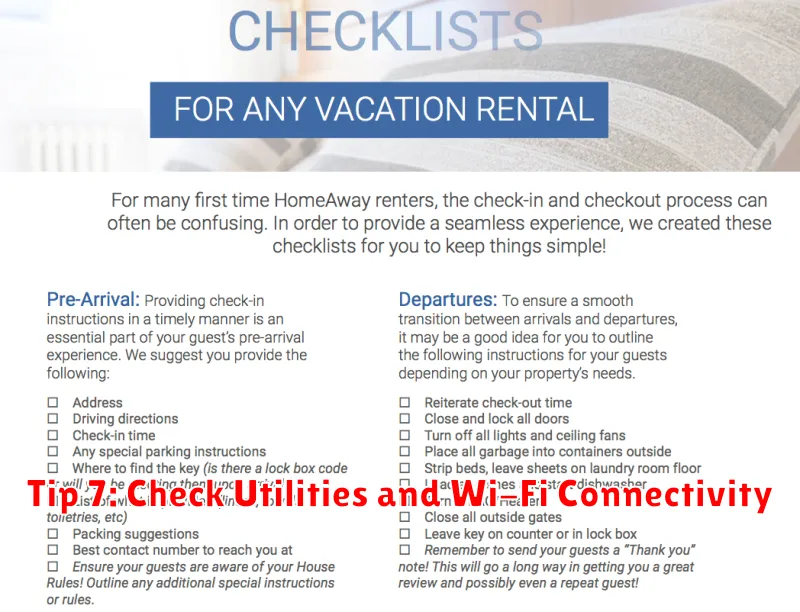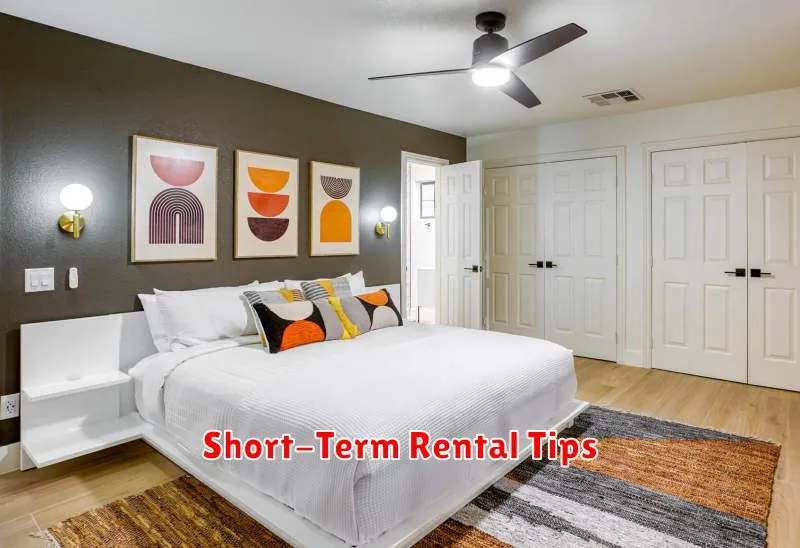Planning a short-term rental? Moving into a temporary space can be stressful, but it doesn’t have to be! This guide provides 10 essential tips for a smooth and enjoyable move-in experience, covering everything from packing efficiently to maximizing your comfort during your stay. Learn how to navigate the unique challenges of short-term rentals and make the most of your temporary home. Whether you’re relocating for work, a vacation, or just a change of scenery, our expert advice will help you achieve a seamless transition and avoid common pitfalls. Get ready to embrace the ease of short-term rental living!
Introduction: Preparing for a Short-Term Stay
Moving into a short-term rental can be exciting, but also a bit stressful. Proper preparation is key to a smooth and enjoyable experience. This means going beyond simply booking your stay; it involves careful planning and organization to ensure a seamless transition. This introductory section will highlight the crucial steps to take before you even set foot in your temporary home, setting the stage for a stress-free move-in.
Unlike a permanent move, a short-term stay necessitates a different approach. You’ll need to consider factors like packing efficiently for a limited time, confirming all details with the property manager or owner well in advance, and managing your expectations regarding amenities and services. By focusing on these preparatory steps, you can significantly reduce potential headaches and maximize your enjoyment during your short-term stay.
The following tips will equip you with the knowledge and strategies needed for a hassle-free move-in. Let’s dive into the practical steps to ensure your short-term rental experience is as comfortable and convenient as possible.
Tip 1: Verify Rental Agreements in Advance

Before you even think about packing boxes, meticulously review your short-term rental agreement. Don’t just skim it; read every clause carefully. Pay close attention to the lease terms, payment schedule, and cancellation policy. Understanding these details upfront prevents future disputes and ensures a smoother move-in.
Specifically, verify the check-in and check-out procedures. Confirm the exact address and any specific instructions for accessing the property. Clarify who is responsible for utilities, maintenance, and cleaning. Note any restrictions on guests or pets. Having a clear understanding of these points will significantly reduce stress and potential conflicts later on.
If anything is unclear or seems amiss, don’t hesitate to contact the property manager or owner to clarify. Getting everything in writing, either via email or a documented amendment to the agreement, is strongly recommended. A well-understood agreement is your best defense against unforeseen issues during your stay.
Tip 2: Inspect the Property Before Moving In
Before you unpack a single box, take the time to thoroughly inspect the short-term rental property. This crucial step protects you from unexpected issues and potential disputes with the landlord or property manager.
Walk through each room, checking for cleanliness, functionality of appliances (refrigerator, oven, dishwasher, etc.), and the overall condition of the property. Look for signs of damage like cracks in walls, stains on carpets, or faulty plumbing.
Test all utilities: Turn on the lights, run the water in sinks and showers, check the heating and air conditioning. Ensure all electrical outlets are functioning correctly. If you encounter any problems, document them immediately.
Note any discrepancies between the listing photos and the actual property. Take photos or videos of any existing damage or issues. Report these findings to the property manager or owner immediately and get it in writing (email is best) that these issues were noted prior to your move-in.
A thorough inspection will provide peace of mind and ensure a smoother stay in your short-term rental. It’s a small investment of time that could save you significant headaches later on.
Tip 3: Pack Only the Essentials for Short-Term Living
Moving into a short-term rental requires a different packing strategy than a permanent move. Minimize what you take! Focus on the essentials you’ll need for your stay. Think toiletries, medications, a few changes of clothes, and any essential electronics like your phone charger and laptop (if needed).
Packing light makes the move itself easier and less stressful. It also simplifies unpacking and makes it simpler to keep your space organized in a smaller area. Consider leaving behind non-essentials like books, decorative items, and extra kitchen gadgets. You can always acquire things you need temporarily at your destination if absolutely necessary. Remember, you’re only there for a short period!
Before packing, create a checklist of necessities to avoid overpacking. This helps you stay focused and avoid bringing items you might not actually use. A well-planned packing list can significantly reduce your stress and allow you to enjoy your short-term stay to the fullest.
Tip 4: Familiarize Yourself with Local Amenities
Before you even arrive, take some time to research the local amenities near your short-term rental. This will save you time and frustration once you’ve settled in. Knowing where the nearest grocery store, pharmacy, and gas station are located is crucial, especially if you’re arriving late at night or are unfamiliar with the area.
Consider also looking into restaurants, parks, and other attractions that might interest you. Check online reviews to get a feel for the quality of local businesses. Many short-term rental listings provide helpful information about nearby attractions, but doing your own research can help you discover hidden gems.
Knowing the location of public transportation, if applicable, is also important for planning your activities and commutes. Utilizing readily available resources such as Google Maps can help you familiarize yourself with the local area and its services even before you step foot inside your rental. This proactive approach ensures a smooth and enjoyable stay.
Tip 5: Communicate with Your Host or Landlord
Open communication is key to a smooth move-in. Before your arrival, confirm your arrival time and any specific instructions for accessing the property. Don’t hesitate to ask questions about anything unclear in the listing or your booking confirmation. This could include details about utilities, Wi-Fi access, parking, or local amenities.
Upon arrival, take a few minutes to walk through the property with your host or landlord. This is a great opportunity to identify and address any issues immediately. Note any existing damage or concerns and document them with photos or videos if possible. This will protect you from being held responsible for pre-existing problems.
Throughout your stay, maintain regular communication. If you encounter any problems, report them promptly. This prevents small issues from escalating into larger problems. A friendly and proactive approach fosters a positive relationship and ensures a more pleasant stay.
Tip 6: Understand the Security Deposit Policy
Before you even think about unpacking, fully understand the security deposit policy. This is crucial for a smooth short-term rental experience.
Review the amount required and exactly what it covers. Is it refundable? What constitutes damage versus normal wear and tear? Are there specific clauses about cleaning fees or late check-out penalties that might impact your deposit?
Ask clarifying questions if anything is unclear. Don’t hesitate to contact the property manager or owner to discuss any concerns. It’s better to be completely informed upfront than to face unexpected deductions later.
Document the condition of the property thoroughly upon arrival. Take photos and videos of everything, especially areas that show any pre-existing damage. This documentation will be essential if there’s any dispute regarding the return of your deposit.
By proactively understanding and documenting the security deposit policy, you’ll significantly reduce the chances of any unpleasant surprises at the end of your stay and ensure a smoother move-out process.
Tip 7: Check Utilities and Wi-Fi Connectivity

Before you unpack a single box, verify all utilities are working. This includes electricity, water, gas (if applicable), and heating/air conditioning. Check the water pressure and temperature, and test all light switches and outlets. A quick check prevents inconvenient surprises later.
Next, confirm the Wi-Fi is functioning correctly. Note the network name (SSID) and password provided by your host. Connect your devices and ensure you have a stable internet connection. A reliable internet connection is essential for many aspects of your short-term stay, from communication to entertainment.
If there are any issues with utilities or Wi-Fi, contact your host immediately. Addressing these problems early will ensure a more comfortable and enjoyable stay. Document any issues with photos or videos for your records.
Tip 8: Plan for Cleaning and Maintenance
Moving into a short-term rental can be exciting, but it’s crucial to plan for cleaning and maintenance to ensure a comfortable stay. Before you even arrive, clarify the cleaning protocols with the property manager or owner.
Understand what’s included in the initial cleaning and what’s expected of you during your stay. Inventory the existing cleaning supplies and note any deficiencies. Consider bringing your own essential cleaning products, especially if you have allergies or specific cleaning preferences.
Regular maintenance tasks, like checking smoke detectors and reporting any maintenance issues promptly, will keep your stay smooth. Communicate any problems immediately; ignoring minor issues can lead to bigger problems later.
Finally, plan for the final cleaning. Understand the requirements for checkout, and make a schedule to tackle cleaning tasks systematically. This will prevent a last-minute rush and ensure a successful departure.
Conclusion: Making the Most of Your Short-Term Rental Experience
Moving into a short-term rental can be a smooth and enjoyable experience if you follow the right steps. By taking the time to thoroughly research your rental, communicate clearly with the property manager or owner, and prepare adequately before your move-in date, you can avoid many potential problems. Remember to document everything, from the condition of the property to any agreements made.
With a little preparation and proactive communication, your short-term rental can become a comfortable and convenient home away from home. Embrace the flexibility and enjoy the unique experience that short-term rentals offer. By being organized and informed, you can maximize your enjoyment and minimize any stress during your stay. So, go ahead and settle in, and make the most of your time!

